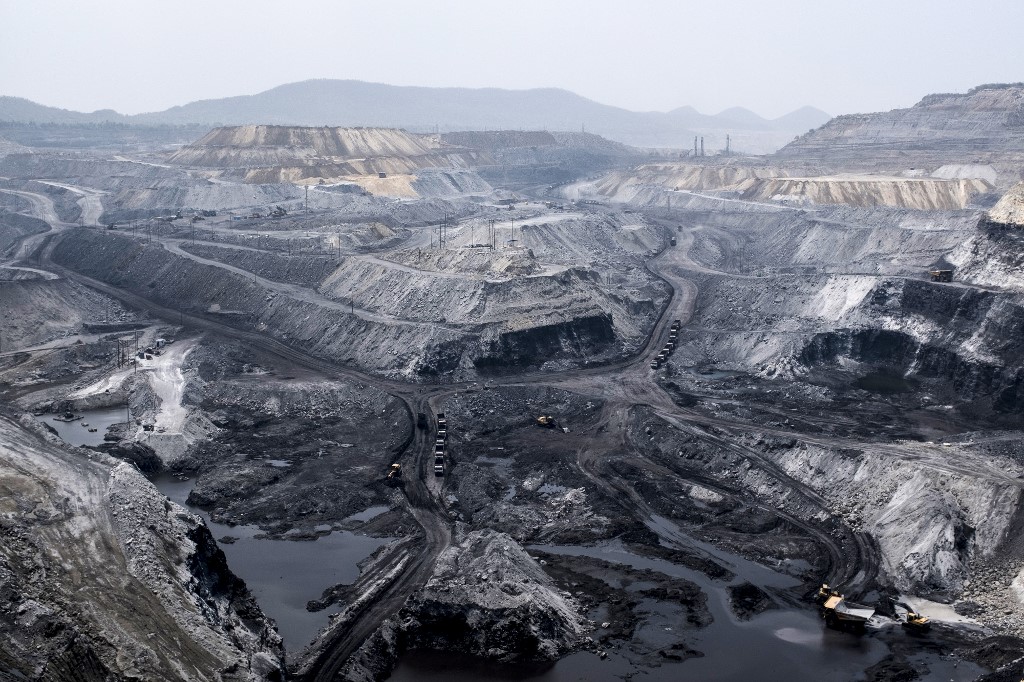(AF) India, like China, is staring at the spectre of large-scale power cuts as its generating plants run low on coal and demand surges as the economy recovers from the Covid pandemic.
More than half of India’s 135 coal-based power plants, which satisfy 70% of the country’s energy needs, had just four days of coal left at the end of September – down from 13 days at the beginning of August, according to official data. Regulations mandate that 22 days of stock be kept at thermal plants.
Read more: India on Brink of Energy Crisis Orders Power Generation Boost
A power crisis would have an immediate impact on India’s nascent economic recovery, which is being led by industrial activity and not a services revival, according to reports.
So while the Indian government is scrambling to ramp up power generation amid growing concern that the coal shortage could plunge the country into darkness, the key questions are – why is India facing an energy crisis? And what real steps is the government taking to address it?
And how did India get here in the first place? Here are six reasons:
1. China’s Voracious Demand
The cost of coal worldwide has soared, triggered by China’s huge energy demand – and its spat with major supplier Australia has pinched supply in the world’s second biggest economy even more. China began boosting coal imports from countries in Southeast Asia such as Indonesia, one of India’s leading suppliers, and others in South Asia, which led to the increase in global prices.
2. Exporter Price Rises
Major exporters’ benchmark thermal coal prices have scaled all-time highs recently – more than doubling to $200 a tonne since the start of the year – with Australia’s Newcastle prices rising roughly 50% and Indonesian export prices up 30% in the last three months. For India though, imported coal prices jumped from $60/tonne in March this year to $160/tonne in September/October, according to Reuters.
3. Floods And Poor Planning
Coal supply was also disrupted by heavy rains which led to flooding of mines, and poor road conditions impacting transportation and offtake. “The current crisis is not manifested by a shortage of coal mining capacity but instead it is caused due to improper foresight, planning and stocking by power generators and the energy regulator in the country – along with other factors such as lower production due to rains that also hindered transportation to power plants over the past months,” says Sunil Dahiya, an analyst at the Delhi-based Centre for Research on Energy and Clean Air.
4. Domestic Demand Jump
An unexpected sharp post-pandemic rebound of the Indian economy also led to a spike in power demand. The demand in August was for 124.8 billion units, according to India Ratings and Research, a jump of 17% from the year ending that month.
5. Shortage Warnings Ignored
Poor planning by power producers who did not look at stocking up despite Coal India’s warnings in February. According to Reuters, state-run Coal India told the Central Electricity Authority that it was “evident that a crisis is arising” unless immediate action was taken to increase supply to power plants. “Yet power plants hesitated to stock up fearing that the third Covid wave expected in September or October could again tank demand,” said Swati DSouza, research head at the National Foundation for India.
6. Renewables Rollout Slowed
Renewable energy installation also slowed down in the past year due to the pandemic. “The lockdowns slowed renewable energy installations in the country. While India had an installation target of 175 gigawatts (GW) of green energy by 2022 and 450GW by 2030, only 7GW of was added in FY 2020/21,” says Vibhuti Garg, energy economist at the US-based Institute for Energy Economics and Financial Analysis (IEEFA).
How long will the crisis last?
While some say the coal crunch could last for six months, according to the IEEFA, supplies should start stabilising in the next 2 to 3 weeks “hopefully.”
The reason for the optimism is three-fold:
- Last week, the power ministry instructed power producers to use biomass pellets in coal-burning thermal power plants, encouraging the use of agricultural waste that is otherwise burnt off by farmers. The ministry mandated thermal power plants to use a 5% blend of biomass pellets along with coal.
- Power producers, usually bound by power purchase agreements with the state grids, were also allowed to sell power not taken by the grid after 24 hours to the open market.
- Also, coal mines that produce coal solely for their own use, known as captive mines were, from last week, allowed to sell 50% of their annual output in the open market too.
- By Indrajit Basu
Read more:
China To Liberalise Coal Power Prices To Ease Energy Woes
China Calls For Huge Boost in Coal Output to Fight Power Crunch
























